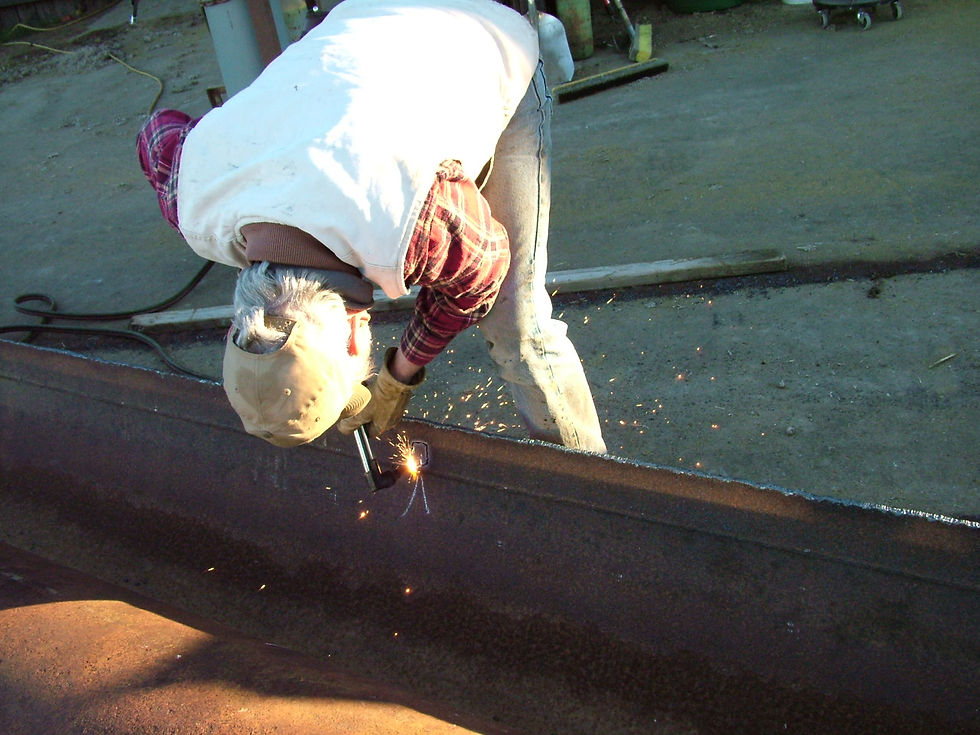
Feed Trough Construction

We bought an 18 wheeler load of used oil pipeline out of Oklahoma. Each pipe was 26 inch diameter, 45 feet long, and weighed 100# per linear foot.

First we cut the pipe in half lengthwise to make the toughs a more manageable 22 1/2 feet long.

Bill at work.

More work.

Checking out the task.

John cutting the pipe lengthwise.

Ready to be split.

John, hammering away.

Ready for the next step.

Cutting holes to attach chains to move the pipe halves around.

We built the feet of the troughs out of 5" square tubing.

Next we needed to smooth up the corners so the cattle would not cut themselves.

Judy welds oil field sucker rod to blunt the sharp edges where the pipe had been cut.

Judy can do anything!

We built concrete feeding pads 10 feet wide and 100 feet long. The pads were formed up with 2X4 lumber. We now use 2X6 forms for the last 10 feet at the ends of the pads to prevent them from breaking off from the weight of the tractor.

The ends broke off due to the heavy tractor and feed wagon. This was remedied by pouring the ends 6 inches thick and using 4000 psi concrete. Also, the grade around the concrete should be built up with gravel to be higher than the concrete.

Next, our troughs are put into place.

The concrete pads are spaced 2 1/2 feet apart. This leave a nice slot in which to set the feed troughs.

The trough ends are left open so they won't hold rainwater. This also allows us to overlap the ends in order to make feed bunks as long as we need them for a particular situation

Our labor has paid off. We have bull-proof troughs that will last a lifetime. Our concrete feeding pads allow us to have a permanent feeding area where we can feed in any weather and don't worry about the tractor getting stuck or the cattle bogging down when they go to eat.
